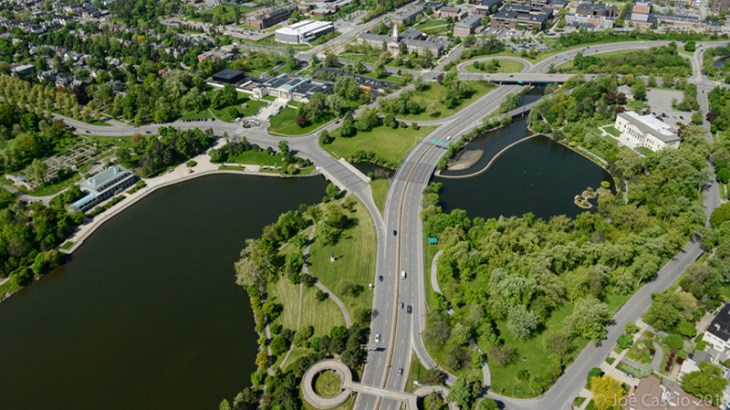Readers of REVITALIZATION searching through our archive of almost 5000 articles will find dozens of stories about cities that are revitalizing by removing, redesigning, capping, or repurposing the (usually) badly-planned urban and waterfront freeways that devastated neighborhoods across America in the mid-20th Century.
Anyone who has seen attended one of my workshops over the past 15 years has likely seen many inspiring examples of this trend in action all around the world.
The following excerpt from a recent New York Times article documents yet another one, and makes it clear that this is a revitalizing movement that is sweeping the country, not just some isolated cases.
The Scajaquada Corridor in Buffalo, New York is a city dweller’s dreamland, a culture-vulture Valhalla. Within two miles there is a restored Frank Lloyd Wright house you can visit, an art museum with Picassos and Gauguins, three college campuses, a zoo and a history museum in a majestic Greek Revival building from the 1901 Pan Am Exposition listed on the National Register of Historic Places.
All of it borders a 356-acre park designed by Frederick Law Olmsted and Calvert Vaux. There is just one problem: An expressway runs through it.
The Scajaquada Expressway, or Route 198, is a 3.2-mile tear in the urban fabric. Built in the early 1960s, it slices Delaware Park in half, isolates north Buffalo from destinations south, makes walking or bicycling in the area a death-courting activity and creates the strange optical illusions common to freewayscapes.
The Albright-Knox Art Gallery and the Buffalo History Museum are less than half a mile apart, on opposite sides of the Scajaquada. Looking across the expanse of pavement and speeding traffic, however, the distance seems insurmountable.
“People don’t cross the Scajaquada,” said Alison Merner, the communications coordinator for GObike Buffalo, who grew up in a neighborhood that borders the expressway. “If I were going to go for a run or a short bike ride, I would always stay on my side. You were kind of on an island.”
The Scajaquada is not just a local barrier but also a poster road for a growing movement being championed by progressives in the urban-planning community.
They want to tear down some highways in cities and replace all that elevated-and-barricaded pavement with lower-speed streets that favor pedestrians and bicyclists and foster greater connectivity among neighborhoods and residents.
Perhaps the greatest argument that removal advocates have is that so much of this infrastructure is nearing the end of its life span.
In this era of tight budgets and political gridlock, it may be cheaper for local and state governments to remove a freeway rather than repair or build a new one.
Photo credit: Photo: Joe Cascio via Buffalo Rising.

